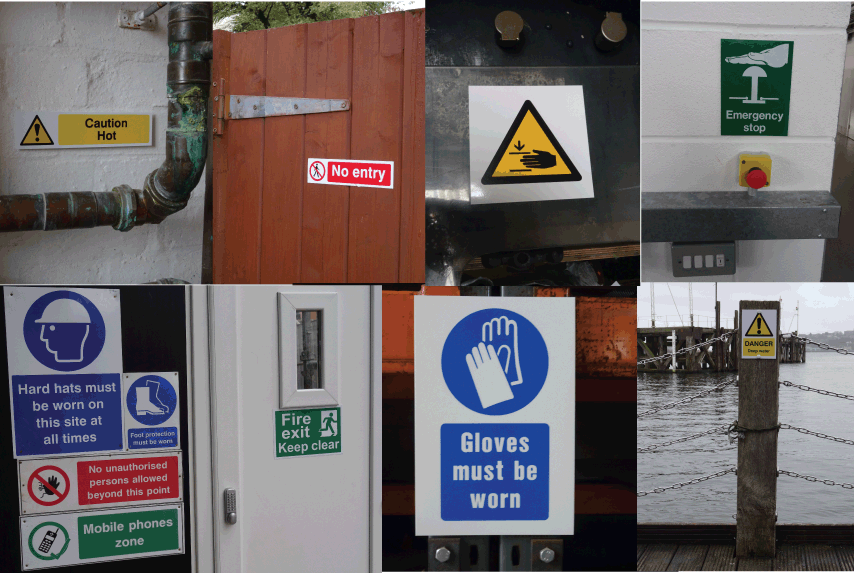
All workplaces can communicate quickly and easily with the use of workplace safety signage. By providing concise and readable instructions, they assist your company in complying with the Health and Safety (Safety Signs and Signals) Regulations 1996. Safety signs also make the workplace a more secure place to work, reducing the likelihood of accidents happening. They are a typical sight at hazardous workplaces like factories and construction sites, but are important to also be utilised at typically less hazardous workplaces such as offices.
There are tens of thousands of distinct signs, but when you divide them up into the basic categories of safety indicators, it's lot simpler to comprehend which ones your company needs.
Do I Need Safety Signs for the Workplace?
You must first do a thorough risk assessment to decide whether safety indicators are required in your business (made under the Management of Health and Safety at Work Regulations 1999). These evaluations aim to pinpoint risks and related dangers as well as the necessary actions that must be performed. You can determine which sorts of safety signage need to be posted based on the findings.
Important Safety Signs
Prohibition Signs

These kinds of signs are crucial since they forbid actions that could endanger people's health or safety. These behaviours are often prohibited because they either violate the norms or customs of particular locations or because they put others at danger of harm or injury.
The Health and Safety (Safety Signs and Signals) Regulations of 1996 mandate the use of prohibition signs. This is because employers have a duty to ensure that everyone is aware of the hazards, as well as to instruct and notify risky behaviour.
The majority of prohibition signs are circular red bands with a single diagonal cross line descending from left to right at a 45 degree angle. Red symbolises danger. In addition to having a stark white background that clearly contrasts with the red, they also include black iconography that conveys the essence of the command.
Mandatory Signs

By outlining the steps that must be taken to adhere to legal requirements, mandatory signs raise awareness of health and safety in the workplace. Save you, your staff, and your visitors' time by using these safety instructions, also referred to as blue signs, without having to speak to them directly.
Mandatory signage makes it crystal clear which behaviours or actions are expected in a public space such as a workplace. This enables you to abide by all health and safety laws and save everyone from harm. It's crucial to note that the Health and Safety (Safety Signs and Signals) Regulations 1996 only applies to mandatory health and safety signs where pictograms are necessary, not to mandatory fire instructions.
Mandatory signs often have a blue circle with a white symbol or text in the centre. A rectangular box with all the pertinent details written in a legible and logical manner is also there.
Warning Signs

The Health and Safety (Safety Signs and Signals) Regulations of 1996 and, in some situations, the Dangerous Substances (Notification and Marking of Sites) Regulations of 1990 both mandate these safety warning signs. In any potentially dangerous circumstance, warning signals are essential since they frequently are part of statutory requirements.
They consist of a triangle's black outline on top of a vivid, eye-catching yellow background. In addition to the black lettering that contains the proper wording for the hazard, the triangle also includes imagery that denotes the sort of hazard.
Emergency Signs

First Aid signs, usually referred to as emergency signs, provide important instructions on what to do in case of an emergency. By providing important information such as where to find first aid supplies, who qualified first aid personnel are, and the proper emergency protocols, they contribute to making your workplace safer.
A green rectangle or square with white text or graphics in the centre is an emergency sign. These consist of places with eyewash stations, emergency showers, and first aid supplies, among many other things.
Fire Safety Signs

Effective fire and health and safety compliance is built on fire safety signs. Each fire safety sign is intended to efficiently and rapidly convey crucial knowledge in the event of an emergency. These signs identify the locations of alarms and provide instructions on how to use extinguishers, utilise fire doors safely, and identify potential dangers.
Displaying fire safety signs has various advantages, including ensuring compliance with fire, health and safety, and construction standards, lowering the risk of harm, and minimising property loss.
In addition to coming in a number of colours—typically red, green, yellow, or blue—fire safety signs can also include words, pictures, or both. The combination of colours makes them more apparent and alerts staff to potentially harmful ingredients like explosives or highly flammable substances.
Fire crises can be discovered and dealt with as promptly and securely as possible thanks to fire safety indicators that decrease fear and improper equipment use.
Make Your Workplace a Safe Space with Label Source
Here at Label Source we have a wide range of safety signs from hazard signs to instruction signs. Browse our office signs today to pick out the ones essential to you and your workplace.